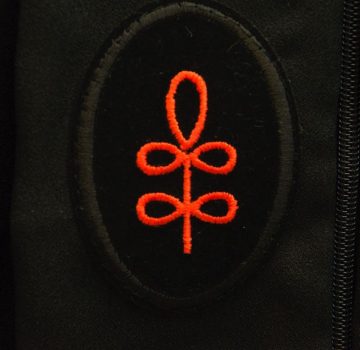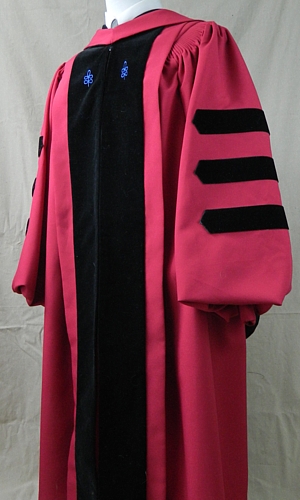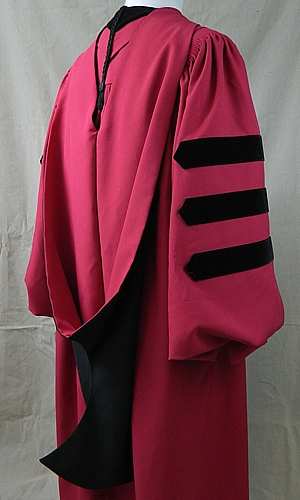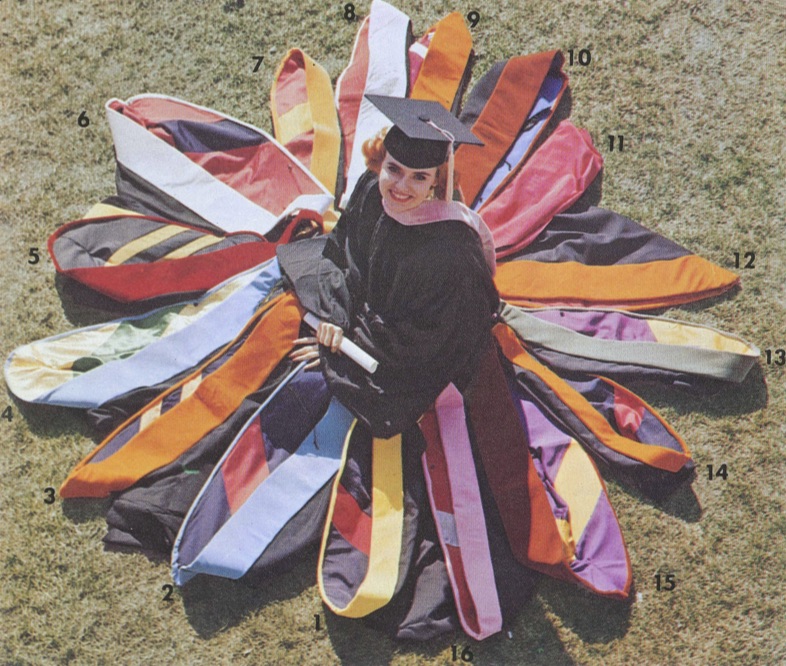Harvard University
Massachusetts
1636
Has officially included Radcliffe College since 1999.



Harvard’s crew athletes first started using crimson red handkerchiefs to cover their heads while wearing white uniforms in an 1858 boating race. But beginning in 1866 only magenta handkerchiefs were available, so Harvard’s color became magenta for several years, which was a source of heated conflict with other schools using magenta, most notably Union College and St. John’s College (Fordham University). This conflict was resolved in 1875, when Harvard students voted to return to the original crimson.
Citations in the World Almanac (listed by cover date; color information is from the previous year): crimson (1895-1935)
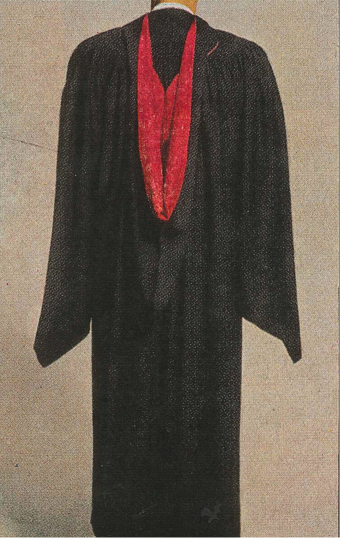
The University Council approved this proposal, making Harvard the most prestigious institution to defect from the Intercollegiate Code, at least partially. These new gowns and hoods were first worn for the spring 1903 commencement, according to The Harvard Graduates’ Magazine, Volume 11 Number 44 (June 1903).
In 1955 Harvard adopted a crimson colored gown for research doctorates. The velvet facings and sleeve bars are tailored from black velvet. Below are two photographs of this gown from the University Cap & Gown Company (Balfour). The dark blue color of the “crow’s feet” on the facings of the gown in the photographs indicates a Doctor of Philosophy degree, something the hood does not communicate because it lacks the velvet edging of the “standard” Intercollegiate Code of Academic Costume hood design.
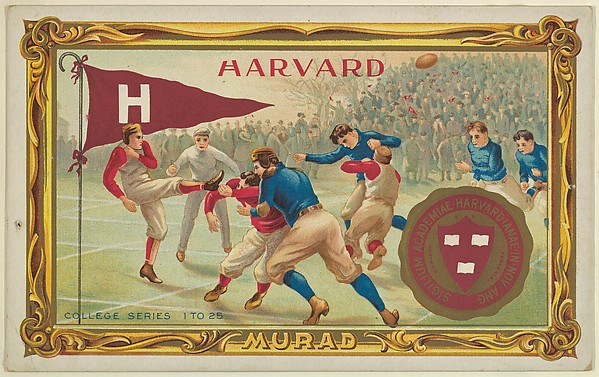
In 1896 Harvard University became one of the first institutions to adopt the 1895 Intercollegiate Code of Academic Costume, according to information from the Intercollegiate Bureau of Academic Costume (IBAC) in the 1897 Living Church Quarterly (published in December 1896). This is not entirely accurate. An editorial in volume 23 (number 4) of The Tuftonian (January 1897) stated that the Code “is now recognized and in use by Yale, Princeton, Columbia, Johns Hopkins, University of Pennsylvania, University of the City of New York, Lafayette, Catholic University of America, University of Chicago, Williams, Dartmouth, Union, Bellevue Medical, Jefferson Medical, Rush Medical, and in part by Harvard.”
In other words, Harvard chose to adopt part of the Intercollegiate Code, but not all of it. The 20 November 1901 Harvard Bulletin explained that “the scheme outlined was considered too elaborate by the Corporation and was not adopted”.
As an alternative to the Intercollegiate Code, in 1902 Harvard’s University Council recommended gowns in the IBAC pattern, but the doctoral gown added embroidered “crow’s feet” in the Intercollegiate Bureau’s Faculty colors to the black velvet facings of the gown, as well as a simplified hood design in the University of Edinburgh pattern [Groves Classification System pattern s4]. This hood had a crimson lining but no velvet trim to indicate the Faculty of the wearer’s degree.
